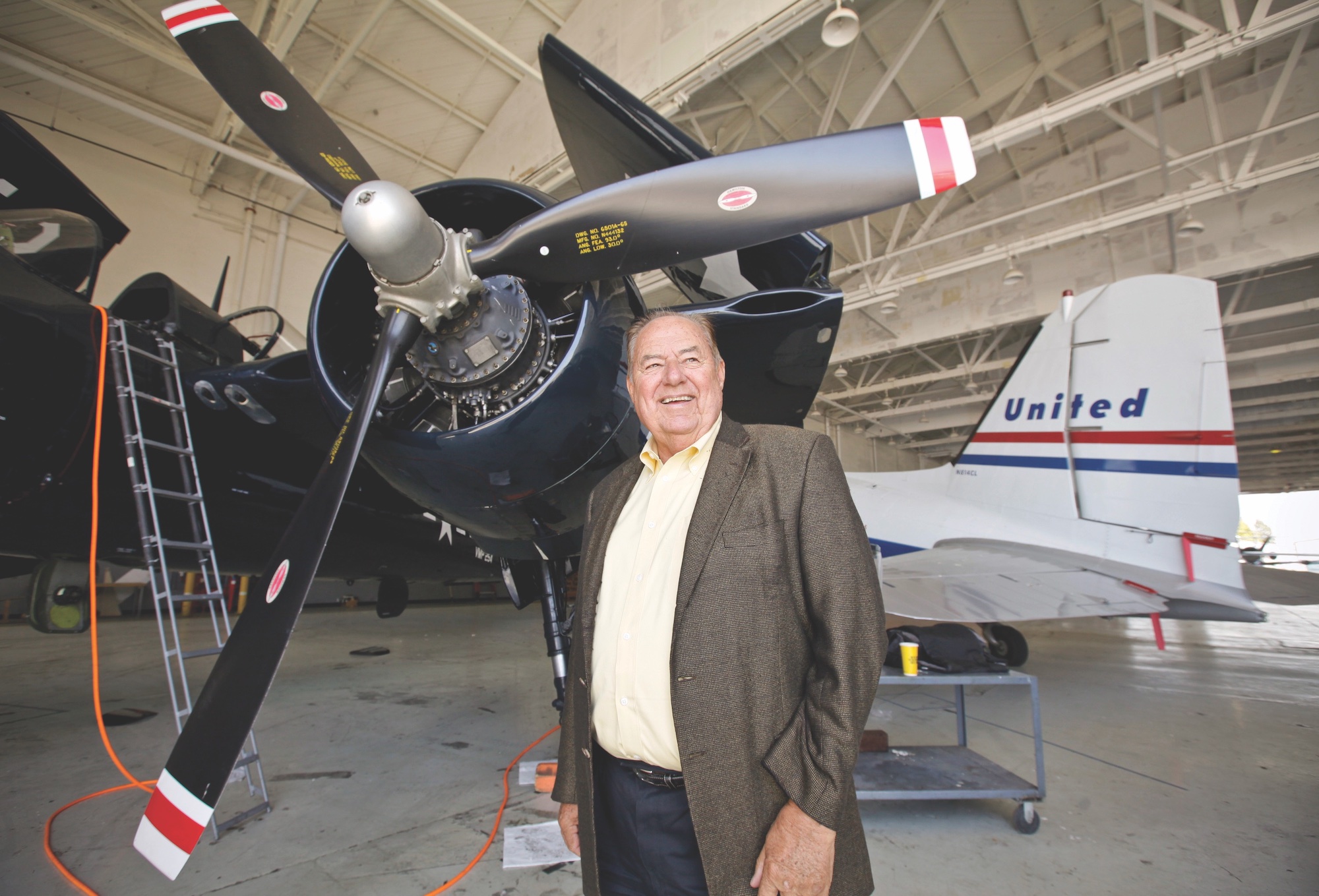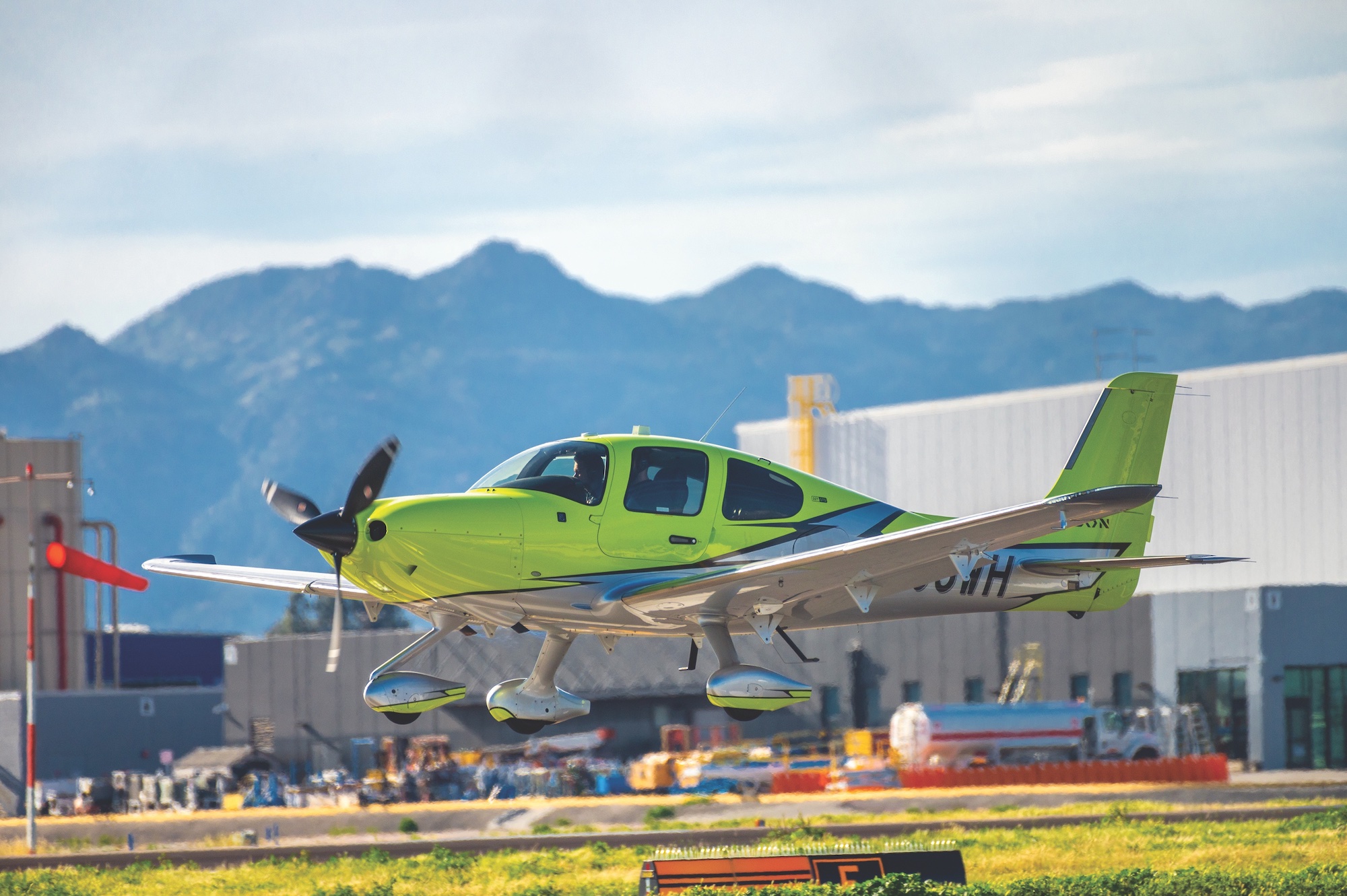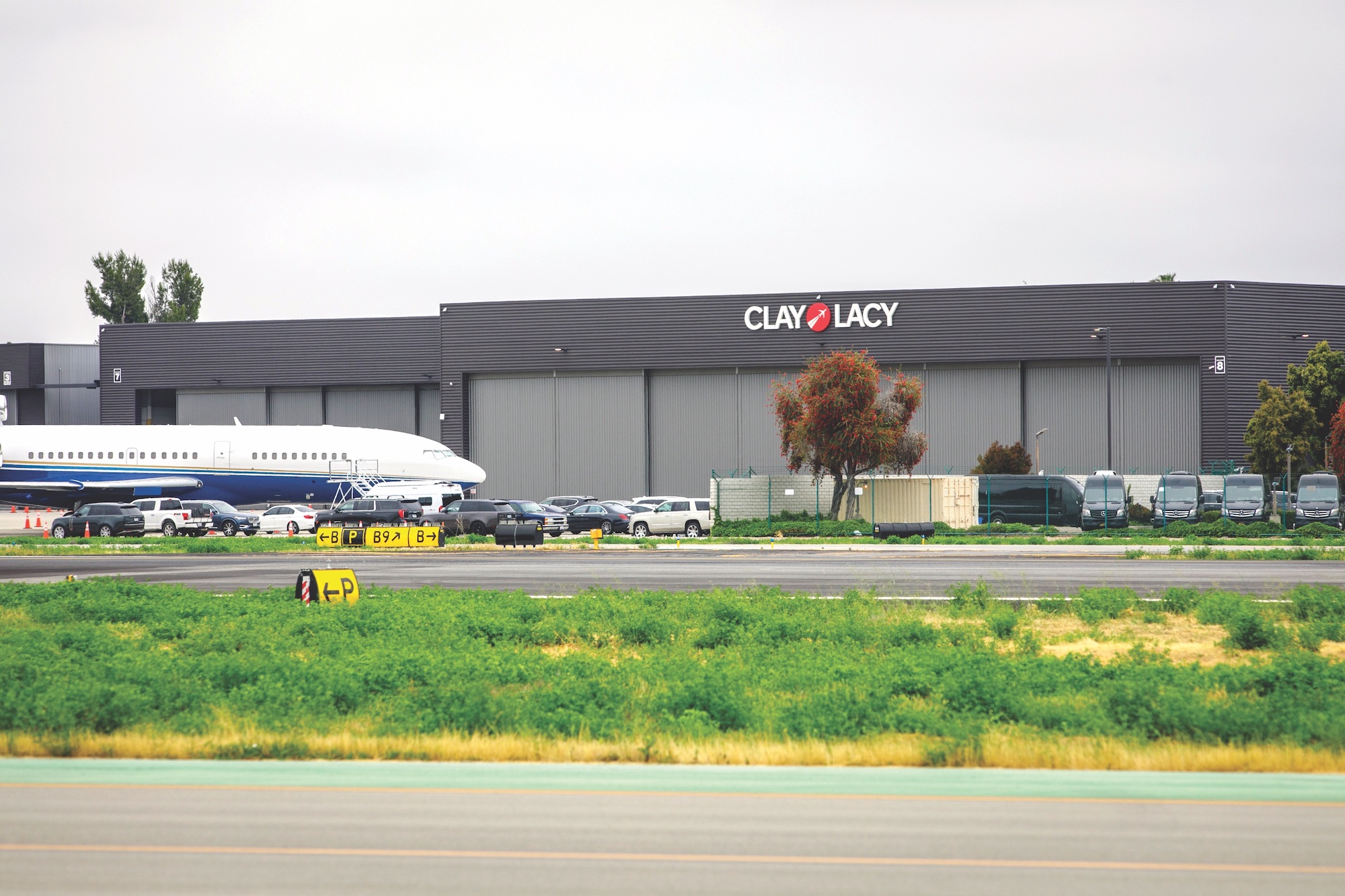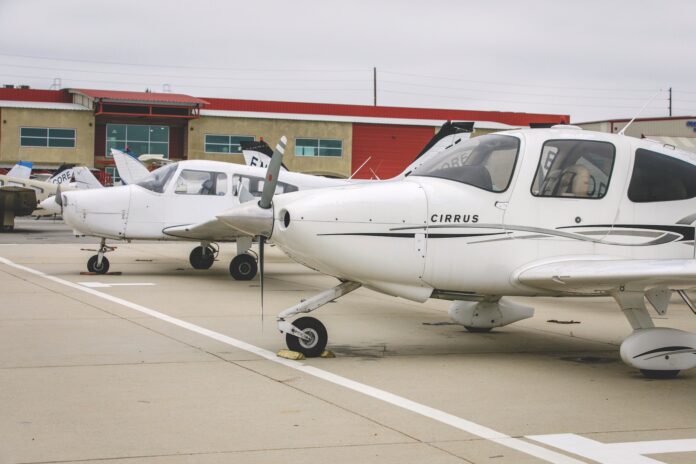Aircraft charter operators at Van Nuys Airport are steering through challenging headwinds as charter demand is dropping and local community pressure is increasing to scale back operations at the Valley’s largest general aviation airport.
The dozens of air charter operators at Van Nuys Airport had seen a brief surge of activity in late 2021 and early 2022 as travel restrictions imposed during the Covid lockdown were lifted and there was a lot of pent-up demand among business travelers.
But once that demand was worked through and the economy was rocked by inflation and rising interest rates, the number of air charter operations at the airport began falling.
“For the past year, things have been on the decline,” said Scott Cutshall, senior vice president for business operations with Clay Lacy Aviation, the largest locally based air charter operator at Van Nuys Airport.
Cutshall said weakening economic conditions have prompted corporate customers – which comprise more than 75% of the company’s business – to cut back on private air travel.
A similar downturn has hit the much smaller local charter operator Planet Nine Private Air, which does business as Planet 9. Like Clay Lacy Aviation, Planet 9 is headquartered directly adjacent to the airport.
“Since the peak in 2021, charter volume has been steadily decreasing back toward pre-Covid norms,” said Matt Walter, Planet 9’s co-founder.
Pressures on airport

Declining demand for flights is only one of the concerns air charter operators are facing these days. There’s also increasing pressure from residents and communities around the airport to cut back on the number of takeoffs and landings at the airport, especially of the largest jet aircraft.
This pressure has existed for decades, but it intensified in the middle of the last decade when the Federal Aviation Administration moved to impose approach and departure route changes as part of a massive overhaul of the use of airspace around airports.
At Van Nuys Airport, the route changes, implemented in late 2017 and early 2018, concentrated many takeoff routes over Sherman Oaks and the Santa Monica Mountains that had previously seen only limited flight activity. This created a new set of winners and losers: some nearby residents that had long been in the main flight paths got some relief, but other residents who had previously experienced infrequent flyovers suddenly were inundated.
“Prior to this change, I would have about 10 to 15 flights per day that were loud enough to disrupt my activities; then suddenly that jumped to 150 to 200 flights per day,” said Wayne Williams, a Sherman Oaks homeowner who lives nearly 5 miles from the airport. Williams is also vice chair of the Van Nuys Airport Community Advisory Council, an advisory group of various stakeholders at and around the airport formed under the auspices of the city of Los Angeles.
Williams said he wants strictly enforced limits on the number of planes with passengers taking off from the airport, as well as a phase out of so-called Stage 3 aircraft, the noisiest category of planes.
Cutshall of Clay Lacy Aviation said his company is turning over its fleet more rapidly than it used to, selling off older, noisier planes and replacing them with newer, quieter planes.
“The problem is that it now takes two to three years for planes that we order to actually arrive – that’s a much longer time than we used to see,” he said.
Charter or commuter airline?

Another issue is the spread of hybrid business models among air charter operators that see them adopt many of the features of small commuter airlines. Under a pure air charter arrangement, the owners/lessees of a plane are the ones who decide when and where to fly the plane; they hire the flight and ground crews and pay for the maintenance work. On a commuter airline, the passengers simply buy a seat on a regularly scheduled flight.
Columbus, Ohio-based NetJets Inc., which started in 1964 as a company selling fractional ownerships of charter aircraft, has recently introduced a business line in which customers can purchase 25 hours of flight time without any ownership stake or responsibility. (NetJets operates an aircraft fueling and maintenance terminal at Van Nuys Airport.)
“This allows charter operators to reach a broader market than just corporations or wealthy individuals that have been the traditional clientele,” said Edward Story, a general aviation expert who serves on the boards of both the California Pilots Association and the Santa Monica Airport.
Williams said these arrangements are coming dangerously close to violating the bans on scheduled service air carriers using general aviation airports like Van Nuys.
But Paul Herrera, the new manager at Van Nuys Airport, said the airport has no intention of allowing commuter airlines to operate there. He added that there is concern about what he termed “charter by the seat” operations, where brokers post online individual seats aboard charter aircraft for specific flights.
“This is concerning to the airport because of the sensitivity of the residential neighboring communities that are negatively affected by the increase of jet operations coming out of the airport,” Herrera said.
Other local airports closing?

Williams and others who want to see limits on activity at Van Nuys Airport cite what’s happened at other nearby general aviation airports. After years of bitter battles, Santa Monica Airport is now on a path toward closure by 2028, thanks to a consent decree agreed upon by the city and the FAA back in 2017. The airport’s main runway was shortened to 3,500 feet in 2017, effectively eliminating the use of many large aircraft. A complete closure of the airport is likely in 2028, but some compromise could still emerge that keeps it open as a smaller operation than it is today.
Meanwhile, at much smaller Whiteman Airport in Pacoima, pressure is mounting from neighborhood groups to close the airport entirely after a pair of plane crashes in the airport’s vicinity. Both the city of Los Angeles and the county have taken initial steps that could result in both joining the call to close the airport. But the FAA must agree to allow the airport to close; such an agreement is still a long way off.
Despite these developments, general aviation expert Story said it’s unlikely Van Nuys Airport would close.
“At one time, Van Nuys Airport was the busiest general aviation airport in the country,” Story said. “Given its size and importance, it’s very unlikely it will ever shut down.”
Airport manager Herrera said he was confident that the airport won’t close.
“Not only do we have obligations to the federal government for the land that we have under LAWA ownership and responsibility, we are at the end of the day an airport sponsor,” he said.
Electric planes
But Story said there is the potential of significant relief from the noise that’s prompting complaints from nearby residents: the eventual deployment of electric and hybrid-electric aircraft.
“Electric aircraft will generally speaking be far quieter than even the quietest aircraft today,” he said.
Hawthorne-based Ampaire Inc. is developing a hybrid model that promises to use much less fuel and generate less noise than conventionally fueled planes. Other manufacturers are developing all-electric planes, including versions designed to take off and land vertically.
Story said that single-engine planes with a range of under 500 miles will likely be the first to be converted to – or replaced by – electric aircraft, perhaps in as little as five years.
“In the longer run, many, if not most of the planes flying out of Van Nuys will either be electric or hybrid-electric,” he said.
Cutshall of Clay Lacy Aviation said his company is looking at how best to deploy the infrastructure that can handle electric and hybrid-electric planes, including charging stations.
Across the airport generally, manager Herrera said airport staff is working with the manufacturers of electric vertical takeoff and landing aircraft to identify places at the airport where they can operate. He added that some helicopter operations at the airport could switch over to electric engines in as little as two years.
For Williams, though, the conversion of planes isn’t happening fast enough.
“I want to see the FAA force aircraft to go electric as soon as possible,” he said.
